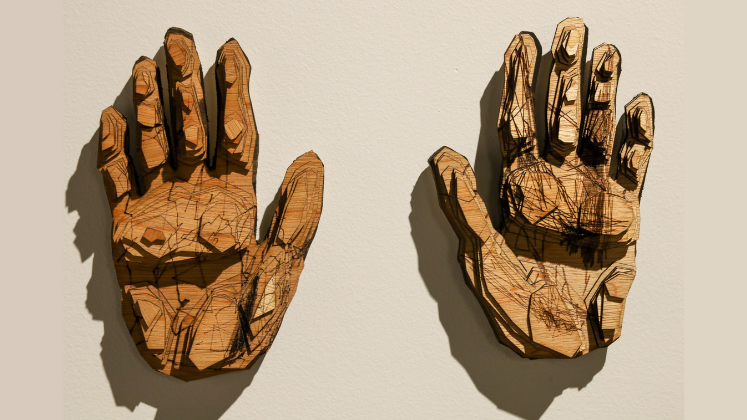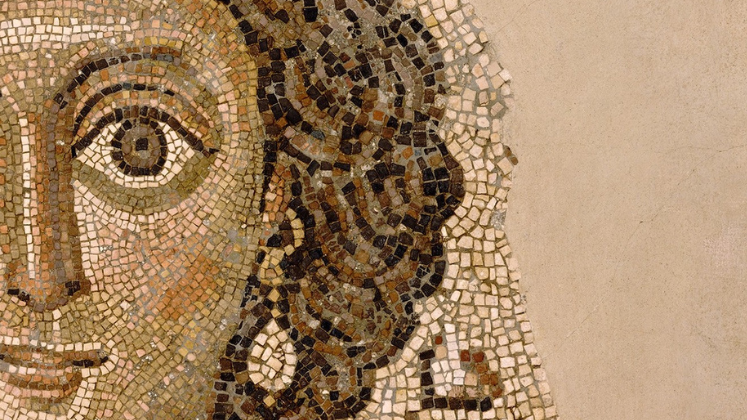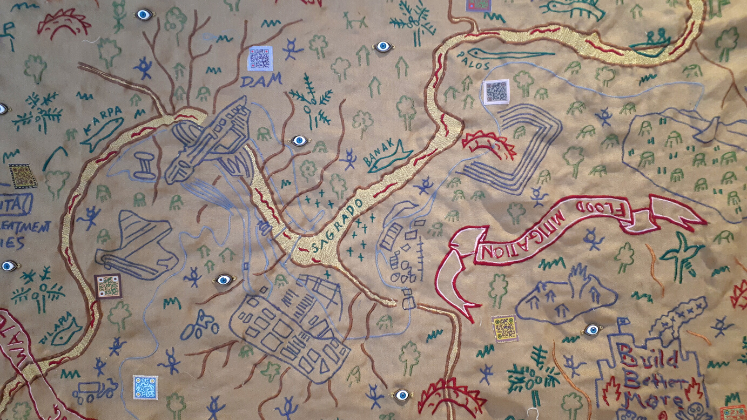In The Museum of Other People: From Colonial Acquisitions to Cosmopolitan Exhibitions, Adam Kuper interrogates the history of anthropological museums and considers questions of colonialism, race, and cultural appropriation around the artefacts they hold. As these institutions face a moment of global reckoning, Kuper offers a balanced, nuanced book on the historical and evolving role of museums, writes Tim Chamberlain.
This blogpost originally appeared on LSE Review of Books. If you would like to contribute to the series, please contact the managing editor at lsereviewofbooks@lse.ac.uk.
The Museum of Other People: From Colonial Acquisitions to Cosmopolitan Exhibitions. Adam Kuper. Profile Books. 2023.
 As an anthropology undergraduate in the 1990s, Adam’s Kuper’s Anthropology and Anthropologists: The Modern British School (Routledge, 1983) was a key text used to introduce students like me to the subject. Kuper noted in the preface to the revised edition that when the book first appeared in 1973, one reviewer observed: “His audacity of desacralising the godlike founding fathers of our discipline and presenting them as human beings, warts and all, has predictably aroused fury in some quarters: it was nonetheless a necessary and salutary action” (ix). Kuper stated that “the emotional reaction to the book clearly had something to do with the fact that it appeared at a moment of transition” (ix). Kuper’s latest book has appeared at a similar moment for modern museums, one which some describe as a “culture war,” while others prefer to call it a pivotal and long overdue moment of postcolonial reckoning.
As an anthropology undergraduate in the 1990s, Adam’s Kuper’s Anthropology and Anthropologists: The Modern British School (Routledge, 1983) was a key text used to introduce students like me to the subject. Kuper noted in the preface to the revised edition that when the book first appeared in 1973, one reviewer observed: “His audacity of desacralising the godlike founding fathers of our discipline and presenting them as human beings, warts and all, has predictably aroused fury in some quarters: it was nonetheless a necessary and salutary action” (ix). Kuper stated that “the emotional reaction to the book clearly had something to do with the fact that it appeared at a moment of transition” (ix). Kuper’s latest book has appeared at a similar moment for modern museums, one which some describe as a “culture war,” while others prefer to call it a pivotal and long overdue moment of postcolonial reckoning.
There is a generational shift occurring now, particularly in how European and American museums are perceived.
There is a generational shift occurring now, particularly in how European and American museums are perceived. Many of them, like the academic discipline of anthropology itself, originated through Western imperialism. Consequently, museums are seen as sites of cultural appropriation that perpetuate an imbalanced colonial legacy which is becoming increasingly contested. Ethical concerns regarding how objects were originally acquired, and how they are displayed and interpreted mean that the basic raison d’etre of museums is being questioned, with angry calls for restitution growing ever louder. All of this is prompting political posturing on both sides of the divide, as well as academic navel-gazing within museums. Kuper’s book sets out to address these difficult issues.
Museums are seen as sites of cultural appropriation that perpetuate an imbalanced colonial legacy which is becoming increasingly contested.
The book is divided into three parts. Parts One and Two examine the historical rise of the modern metropolitan museum in Europe and America, respectively, while Part Three discusses the issues which this historical legacy poses to such institutions now, specifically those museums centred around ethnographic collections – hence Benoît de L’Estoile’s description of “le musée de l’Autre,” or, as Kuper calls it, “The Museum of Other People.” The first two thirds of Kuper’s book, therefore, is dedicated to showing how museums embodied an ethos which was born out of the European Enlightenment during the eighteenth century, and how museum collections subsequently grew out of the colonial expansion of Western nations during the nineteenth and early twentieth centuries. This story is a typically male-dominated catalogue of eminent collectors who acted as benefactors or founders of many of the world’s most well-known museums. Kuper surveys the field in depth, beginning with the activities of ‘Jomard in Paris,’ ‘Siebold in Leiden,’ and ‘Thomsen in Copenhagen,’ moving on to comparative case studies of the British Museum and the Pitt Rivers Museum in Britain, as well as the preeminent museums in Germany, France, and the USA, including the newly created Humboldt Forum and the Musée du quai Branly-Jacques Chirac. This is the typical, 101 introductory material which is required reading for anyone with an interest in museum studies or the history of science, but here it provides the necessary context for the main crux of Kuper’s exposition, which he sees as arising from an intellectual battle between anthropologists and art historians. As such, the more contentious and challenging content is found in the opening chapter and the last third of Kuper’s book. Here, he digs deep into contemporary issues, such as the ways in which museums should confront historical scientific racism, how to deal with human remains and the sensitivities concerning their display and repatriation, and examines the legacies of colonial wars, looting, and the slave trade, as well as notions of “primitive art” and performative identity politics. Kuper asks numerous pertinent questions about the purpose of our museums and modern museological practices in the twenty-first century, noting that museum collecting is a practice which continued and even accelerated in the postcolonial era. But he is concerned that the pendulum of cultural relativism could now swing too far in the opposite direction.
Museums are not, and have never been, neutral spaces. The use, display and interpretation of seemingly static and inert objects can be highly contentious when viewed from the multiple perspectives of today’s increasingly mobile and diverse audiences.
Museums are not, and have never been, neutral spaces. The use, display and interpretation of seemingly static and inert objects can be highly contentious when viewed from the multiple perspectives of today’s increasingly mobile and diverse audiences. Western museums are no longer solely the preserve of the Eurocentric universalising culture which created them. Over the last few decades museums have been gradually waking up to the reality that they must engage and interact with the cultures whom they profess to represent through the collections in their care. But as Kuper points out, to “focus on the colonial period is arguably misleading” (24). Aside from the more emotive examples of cause célèbre objects, such as the Parthenon Sculptures or the Benin Bronzes, “blanket condemnation of all transactions in the age of empire downplays local agency. Collectors were typically drawn to established systems of exchange” (18). Kuper attempts to show how the realities of both former and current collecting practices, as well as today’s ideas concerning curation and display are more nuanced than is often acknowledged. Without necessarily being apologists for colonial wrong-doing, modern museum managers and curators are in fact engaging with current concerns and beginning to effect a contemporary paradigm shift.
In recent years, many museums have sought to engage and interact with both source and diaspora communities to better understand their own holdings, to collaborate in research programmes and to inform more sensitive modes of display and interpretation.
In recent years, many museums have sought to engage and interact with both source and diaspora communities to better understand their own holdings, to collaborate in research programmes and to inform more sensitive modes of display and interpretation. It is arguable that this has sometimes been a means of countering or tempering calls for restitution and repatriation. Equally such moves are fostering the process of redefining museums’ core purpose and their function as resources for understanding both human diversity and commonality through material culture. Museums have sought to adapt to these changing perceptions through rebranding themselves as global cultural centres of custodianship and exchange. Gallery talks and object labels are being used as the most immediate means of acknowledging and addressing colonial legacies, while programmes of international touring exhibitions have been promoted as a more dynamic and inclusive method of actively sharing a museum’s collections with a broader audience.
But the larger metropolitan museums are commonly perceived as being too slow to change.
But the larger metropolitan museums are commonly perceived as being too slow to change. As anyone who has worked in a big museum will attest, there are multiple reasons why this is sadly the norm. Throughout my lifetime, museums in the UK seem to have been in a state of permanent crisis. Chronic underfunding by successive governments and practical limitations on how museums can generate their own income, as well as constraints on how they are allowed to spend their budgets are a constant headache which museum administrators, collection managers and academic curators continually have to contend with. Very few philanthropic sponsors are interested in funding a museum’s core functions, whether those are curatorial or simply maintaining the toilets or ensuring the roof does not leak, not to mention controversies concerning which sponsors are deemed ethically suitable in the first place. And yet, while sponsors may be easily found for glitzy temporary exhibitions rather than refurbishing permanent galleries or modernising storage facilities, balancing the respective inputs and necessary mediation between multiple stakeholders means that all museum displays are essentially a compromise which fully satisfy no one. Likewise, Kuper’s book attempts to tread a fine line between calling for radical change while also opposing the more emotive over-simplification of the contentious issues major museums face, and so risks disappointing both sides of the debate. The idealism of both camps clearly needs to be balanced to reach any sort of resolution, but all too often the sparring matches of such commentators fail to reconcile aspirations with actual practicalities.
Kuper’s book attempts to tread a fine line between calling for radical change while also opposing the more emotive over-simplification of the contentious issues major museums face, and so risks disappointing both sides of the debate
However, in presenting his challenge and as an attempt at proposing a way forward, Kuper’s book is invaluable for specialists who study or work in museums and who want to actively engage with such issues, as well as for interested and concerned persons who would like to learn about the subtleties and nuances that are often overlooked in the mainstream debate. Some readers will no doubt view The Museum of Other People as a rearguard defence by a veteran anthropologist and dismiss Kuper’s polemic out-of-hand; but they would be wrong to do so, because this is a thoughtful, measured, and well-intentioned book which argues and evidences its calls for change in an accessible and informative manner. Kuper’s aim is to highlight that museums should function as cosmopolitan loci for sharing and thinking about human cultures to bridge past and present in ways which can help us to forge a better future together. In that respect alone, museums are indispensable social and historical assets for everyone.
The content generated on this blog is for information purposes only. This Article gives the views and opinions of the authors and does not reflect the views and opinions of the Impact of Social Science blog (the blog), nor of the London School of Economics and Political Science. Please review our comments policy if you have any concerns on posting a comment below.
Image Credit: Image Credit: The Benin Bronzes on display in the British Museum by Dennis Diatel on Shutterstock.







